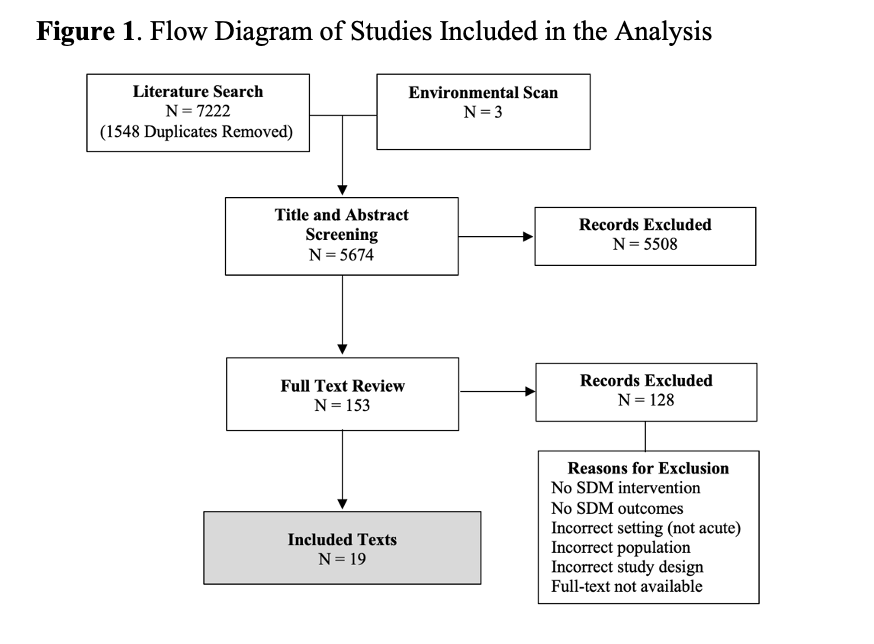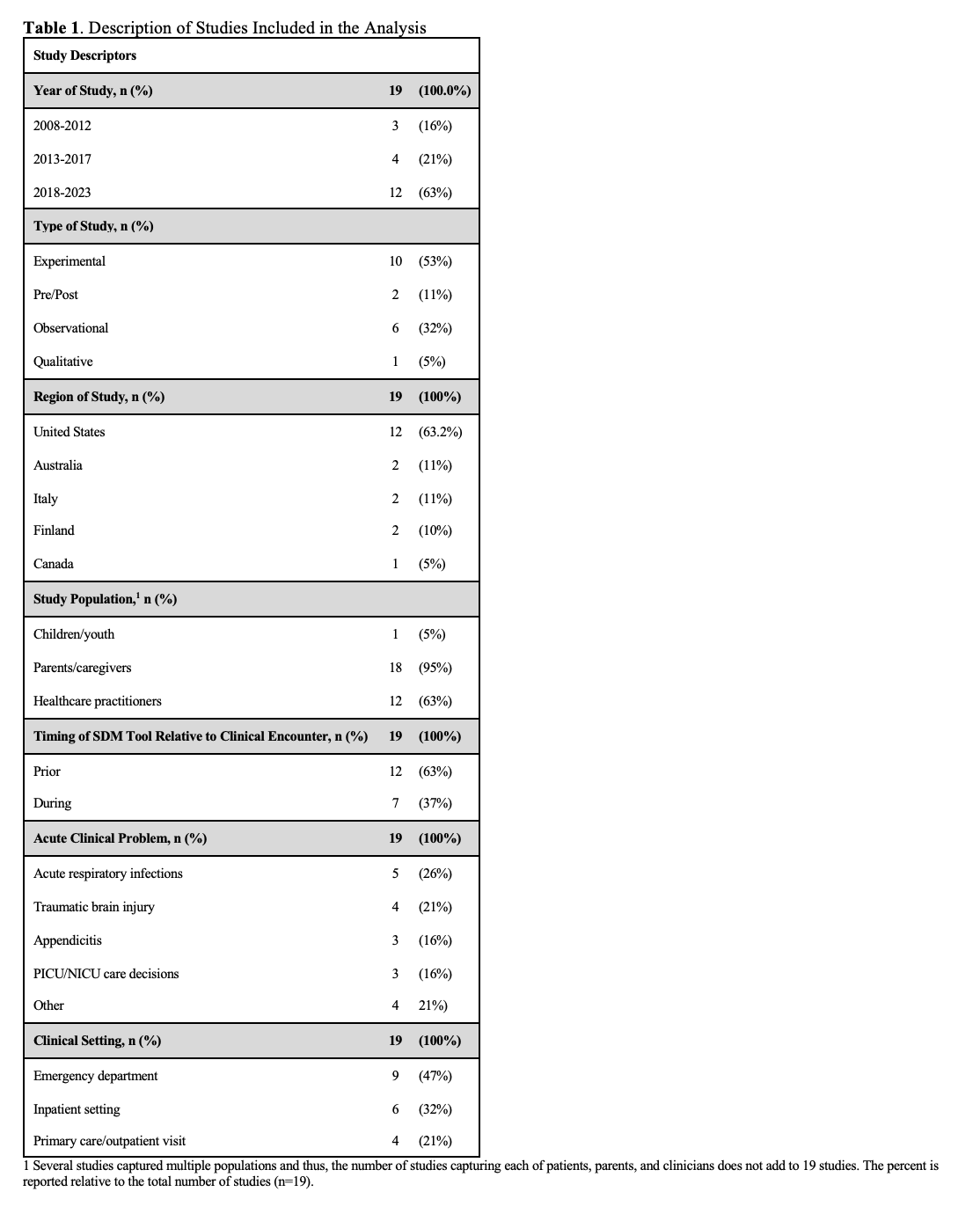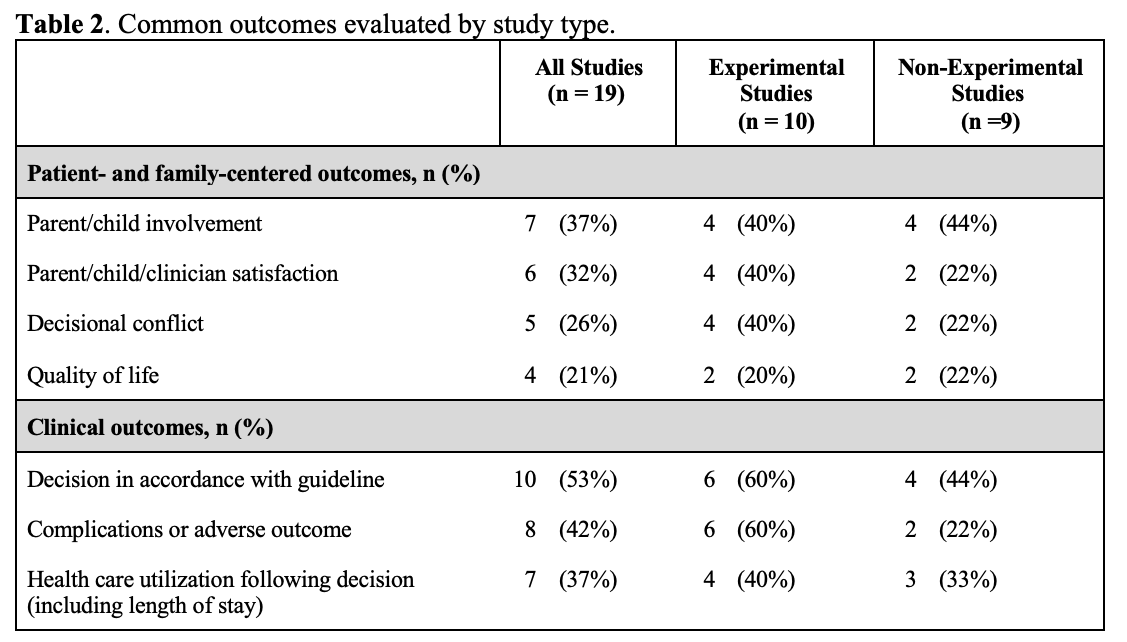General Pediatrics
Session: General Pediatrics 4
355 - A Systematic Review of Shared-Decision Making in Pediatric Acute Care Settings
Saturday, May 4, 2024
3:30 PM - 6:00 PM ET
Poster Number: 355
Publication Number: 355.1540
Publication Number: 355.1540

Gemma Postill, BMScH
MD/PhD Student
Temerty Faculty of Medicine, University of Toronto
Toronto, Ontario, Canada
Presenting Author(s)
Background: Shared decision making (SDM) is where patients (or parents/caregivers) and clinicians come together to determine the optimal plan of care based on the best available evidence and patient preferences. Engaging families in SDM is an important principle in patient- and family-centered care and improves patient satisfaction and clinical outcomes. Despite evidence highlighting the importance of SDM in pediatrics, no prior systematic review has described the effectiveness of SDM interventions in acute care settings.
Objective: To describe implemented pediatric SDM interventions and their impact on patient- and family-centered and clinical outcomes in acute care settings.
Design/Methods: We searched Ovid MEDLINE, Ovid EMBASE, Ovid Cochrane Library, CINAHL, Web of Science, Scopus, and Ovid PsycInfo databases from 2008 to 2023 to identify studies that: 1) included children and youth < 19 years, their caregivers, or both; 2) utilized approaches and/or tools to facilitate patient involvement in acute medical decision making; and 3) evaluated any patient-reported and/or clinical outcomes. Studies were included regardless of study design or language. We described and evaluated SDM interventions, study type, measured outcomes, and study quality.
Results: Of 5674 articles identified, 153 studies were selected for full-text review, and 19 studies were included (Figure 1). Most studies were conducted in the United States (Table 1). Ten studies used an experimental design, six observational, two pre/post and one qualitative. Clinical problems studied included acute respiratory infection (n=5), traumatic brain injury (n=4), and appendicitis (n=4). Most studies were in the emergency department (n=9), followed by the inpatient setting (n=6), and outpatient setting (n=4). Parent/child involvement, satisfaction, and decisional conflict were frequently measured patient-centered outcomes, while guideline adherence, complications, and healthcare utilization were the most common clinical outcomes (Table 2). The studies demonstrated effectiveness of SDM in a variety of acute care settings, with respect to their ability to augment family-centered care without increasing clinical complication or healthcare utilization.
Conclusion(s): Our comprehensive systematic review of SDM interventions in pediatric in acute care settings described the interventions and their evaluated in patient-centered and clinical outcomes, highlighting the effectiveness of SDM tools across acute care settings. These results can support the implementation and evaluation of SDM in acute pediatric care.



